San
Diego Jewish World
Saturday
Evening, July
7, 2007
Vol. 1, Number
68
|
Archives Event Tracker HOME Jewish Directory Jewish Grapevine Jews in the News News Sleuths Sports |
|
Poll: Palestinians more
scared of each other than of Israelis |
Poll: Palestinians
more scared of each other than of Israelis |
* Anderson Travel*JCC Maccabi Games *Jewish American Chamber of Commerce *Seacrest Village Retirement Communities Please take advantage of our low advertising rates: only $10 per day for non- profits; $20 per day for businesses (619) 265 0808, sdheritage@cox.net |
plan proposed by US Secretary of State Condoleezza Rice.
Assessments of the Arab League (Saudi) Plan, the Israeli leadership's degrees of
freedom to negotiate with various configurations of a Palestinian government and
an Israeli-Syrian settlement were also examined.
Forty six percent of Israelis believe that another war can be expected this
summer. 49% of Israelis believe that a ground operation in Gaza would promote
such a war, while 46% believe that negotiations with Syria could prevent it.
Further findings of the survey reveal that 70% of Palestinians believe that the
chances of the establishment of a Palestinian state in the next five years are
low or non existent. Twenty three percent meanwhile say they are not proud to be
Palestinian.
The findings also indicate a strong belief by both publics that armed
confrontations between the two sides will continue. Only 31% of Palestinians
believe it possible to reach a compromise settlement with the current Israeli
leadership. While 60% of Israelis support negotiations between Israel and Abu
Mazen over a final status settlement, only 42% of Israelis believe that it is
possible to reach a compromise settlement between Olmert and Abu Mazen. In
December 2006, 46% believed so.
While optimism in the leadership of the other side has dropped significantly
since the last opinion poll in March 2007, the survey also demonstrates a lack
of support by Palestinians for Abu Mazen. If new presidential elections were
held today, 40% would not participate in these elections. Among those who would
participate, 49% would vote for Abbas and 42% for Haniyeh. If the race was
between Marwan Barghouti and Ismail Haniyeh, non participation would drop to
31%. Among those who would participate, 59% would vote for Barghouti and 35% for
Haniyeh. In the Gaza Strip, Barghouti is favored against Haniyeh by 55% to 41%.
With the backdrop of the internal strife in the Gaza Strip, 54% of Palestinians
and 85% of Israelis see democracy in the Palestinian Authority as a failed
system that cannot be implemented in Palestine.
The Palestinian sample consisted of 1270 adults interviewed face-to-face in the
West Bank and Gaza Strip in 127 randomly selected locations between June 14 and
20, 2007. The margin of error is 3%. The Israeli sample includes 598 adults
interviewed by phone in Hebrew Arabic or Russian between June 12 and 19, 2007.
The margin of error is 4%. The poll was planned and supervised by Dr. Yaacov
Shamir, the Harry S. Truman Research Institute for the Advancement of Peace and
the Department of Communication and Journalism at the Hebrew University and Dr.
Khalil Shikaki, director of the Palestinian Center for Policy and Survey
Research (PSR).
The joint survey was conducted with the support of the Ford Foundation Cairo
office and the Konrad Adenauer Foundation in Ramallah.
The preceding story was provided by the Hebrew University in Jerusalem
|
Israel and Middle East |
Board member, professor and student provide reasons for
Tel Aviv U to kvell
TEL AVIV (From Press Releases)—This has been a season of nachas for Tel Aviv University. A member of its board of governors, Dr. Viatcheslav Moshe Kantor of Russia, is the new president of the European Jewish Community.
One of its professors, Yoram Peri, has had his Generals in the Cabinet Room
- How the Military Shapes Israeli Policy selected as an Outstanding Book by
University Press Books for Public and School Libraries.
Furthermore, one of its students, Michal Dekel, whose research specializes in
Molecular Genetics, is winner of the FameLab 2007 Prize in Israel and was a
participant with winners from eight other nations in the Cheltenham Science
Festival in England.
The foregoing article combined three press releases from Tel Aviv University

University of Haifa names
Arab as VP for research
HAIFA (Press
Release)—The Board of
Governors of the Univeristy of Haifa has voted to appoint Prof. Majid Al-Haj
Vice President and Dean of Research.
Prof. Al-Haj is a sociologist, renowned for his research in multi-culturalism,
political sociology, ethnic relations and immigration. He has been a visiting
scholar at universities abroad including Carleton University in Canada and Duke
University in the U.S.
He has served as a member of Israel’s Council of Higher Education, Chairman of
the Committee for Advancement of Higher Education among the Arab Population in
Israel, head of the Center for Research in Multiculturalism at the University of
Haifa and one of the founders and head of the Committee for Supervision of Arab
Education
The preceding story was provided by the
University of Haifa
|
Nancy Harrison of Anderson Travel
presents: |
Aboard Holland America Ryndam |
|
Commentary |
Monsignor Mikulanis provides
documentation
on what Pope Benedict XVI really did

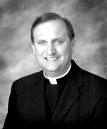
 Editor, San Diego
Jewish World:
Editor, San Diego
Jewish World:
Foxman
Mikulanis Pope
Benedict XVI
The reaction of Abe Foxman of the ADL to Pope Benedict XVI's motu proprio
(On his own initiative) letter to the restoration of the traditional Latin Mass
for those Catholics who wish to use it is perplexing.
A clear reading of the letter spells out the reason why the Pope did this and a
careful reading of the letter shows that in Article 2 the pope specifically
states: "... each Catholic priest of the Latin rite, ... may use the Roman
Missal published by Blessed Pope John XXIII in 1962, or the Roman Missal
promulgated by Pope Paul VI in 1970, and may do so on any day with the
exception of the Easter Triduum [emphasis mine] ... " Hence, for the
liturgies of Holy Thursday, Good Friday and the Easter Vigil the "old" missal
can not be used!
The problematic language of the Good Friday liturgy of the Missal of Pope Pius V
was personally and specifically removed by Pope John XXIII in 1962!
This permission to use the "old" missal will not be widely used in the Catholic
Church but will provide comfort to some who long nostalgically for the "good old
days" when it was thought God is in heaven, the Pope is in Rome and all is well
in the world.
It appears to me that Abe Foxman leaped before he looked and, to his shame, is
causing disquiet and upset where none should exist.
Msgr. Dennis L. Mikulanis, S.T.D.
Vicar for Ecumenical and Interreligious Affairs
Diocese of San Diego
(Editor's Note: Msgr. Mikulanis provided the actual text of the papal letter,
which in the interest of completeness and scholarship, we reprint below. Msgr.
Mikulanis is known in San Diego as a wonderful friend to the Jewish community
and we appreciate his reassurances.
{jump to papal letter}
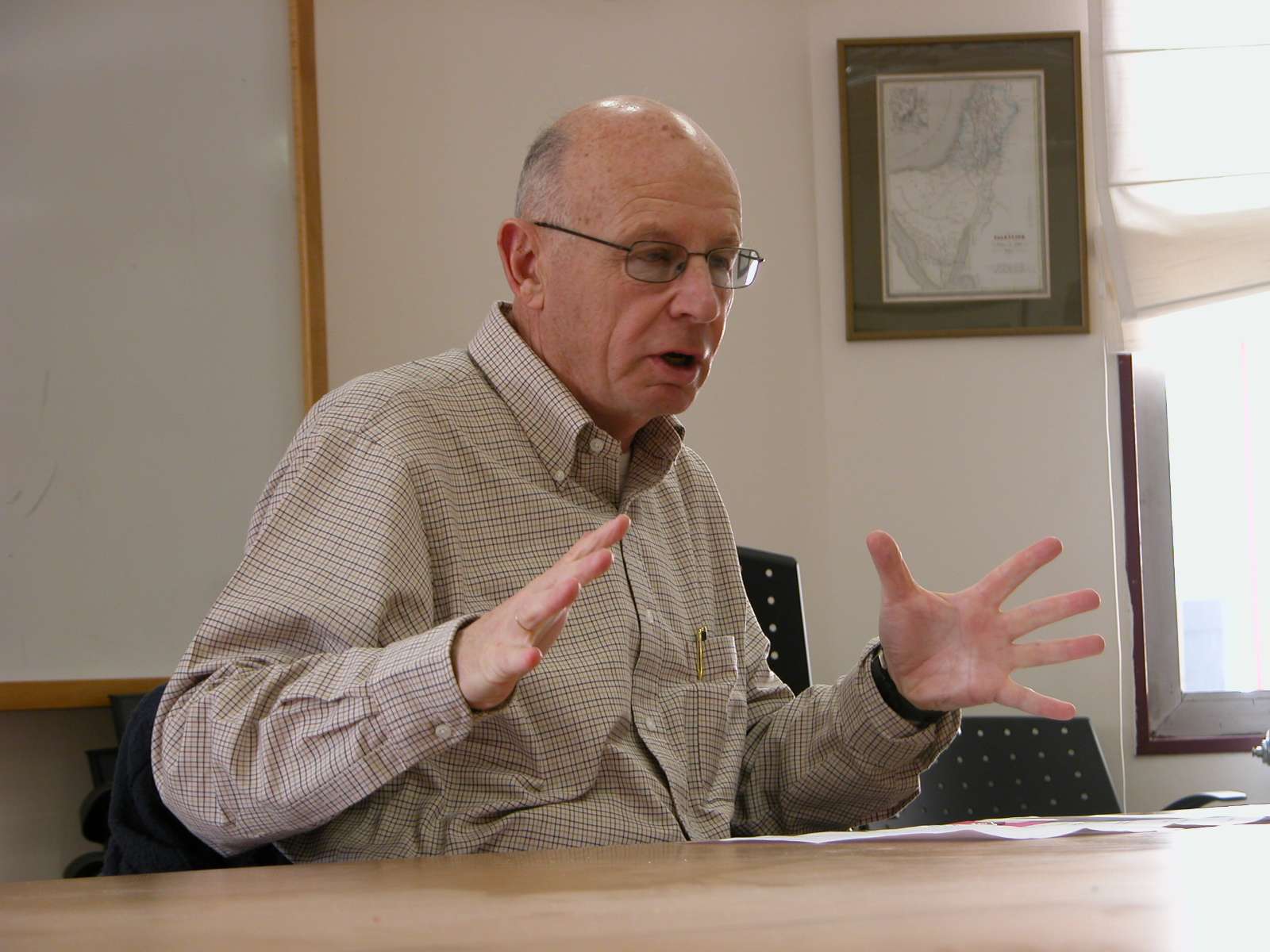 Letter from Jerusalem By Ira Sharkansky |
Dissecting Jimmy
Carter's Palestinian propaganda
JERUSALEM—A professional journal asked me to review Jimmy Carter's Palestine
Peace Not Apartheid. A Palestinian student, on the occasion of a party to
celebrate the completion of his masters thesis, gave me a copy of Nakba:
Palestine 1948 and the Claims of Memory, edited by Ahmad H. Sa'di and Lila
Abu-Lughod.
I read them both, with a mounting sense of discomfort. It does not bother me so much that both books portray Israeli contributions to Palestinian misery. We live amidst intense dispute. Defense and preemption are violent. Not every action of a uniformed Israeli would stand a test of morality. History is sufficiently knotted with attack, counter attack, deception, and personal tragedy to hinder any simplistic assertion of who started it, and what was more or less justified.
What bothers me in both books are themes of Palestinian self-pity, and an almost complete lack of willingness to accept any responsibility for their misery. The product is self-destructive. The Palestinian narrative, which Carter adopts and reinforces, works against any compromise or concession that can end the bloodshed.
Carter is not entirely one sided. Several times he notes that a continued lack of peace stems from the failure of Palestinians and other Arabs to recognize Israel’s right to exist, and their violence against its civilians. Critics of Carter’s book should recall that his pressure at Camp David in 1978 produced a peace treaty with Egypt. It ranks as one of the best services of an American president for Israel. Israelis, Egyptians, and Carter are unhappy with the follow-up to that accord. Nonetheless, it has held, and brought significant benefits to both Israel and Egypt.
Carter joins the Palestinian cause by putting the greater blame for continued problems on Israel’s intransigence. He writes that it has not negotiated in good faith; it is intent on seizing Palestinian land for the sake of Jewish settlers in violation of international accords that it has accepted; and it is walling off segments of Palestinian territory from one another in a way to make the functioning of a viable state impossible.
The basic
flaw of Carter's book, justifying the label of dishonesty, is its title.
“Apartheid” is a loaded word, associated with the widely condemned racist regime
of South Africa. In the book, and in numerous presentations, Carter has
indicated that Israel itself is not an apartheid society. I see the term denied
whenever I meet with one of my Arab students, chat with an Arab friend in the
gym, or when I hear of yet another Arab family moving into our largely Jewish
neighborhood and sending its children to the Hebrew-language primary school.
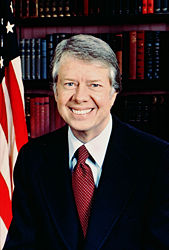 (jump to continuation)
(jump to continuation)
____________________
The myth of American Jewish silence during
the Holocaust
By Alex Grobman, PhD
ENGLEWOOD, New Jersey—Sometimes when we are called to action in behalf of Israel
we are urged not to make the mistake of the past when “rabbis did not speak out
during the Shoah.” This is simply not true. There is a real danger in distorting
and trivializing the Holocaust by making these comparisons. The scope of this
essay cannot address the entire issue of rabbinical response during this period.
A complete analysis must include the efforts of Rabbi Stephen S. Wise and other
leading rabbis whose response must be seen within the context of the times.
Significantly, the only public demonstration by American Jews to bring the issue of rescue to the forefront was the rabbis march on Washington D.C. on October 6, 1943. Since the Bermuda Conference—April 19-30, 1943—failed to find a solution to the refugee crisis, rescue became a major item on the Jewish community agenda. The U.S. and Great Britain had convened the conference to address the problem of wartime refugees, but it was essentially a charade designed to appease those petitioning them for action.
Dressed in long, dark rabbinic garb, the rabbis walked from Union Station to the Capitol Building. There, on the vast and imposing marble staircase, Rabbis Eliezer Silver, Israel Rosenberg and Bernhard Louis Levinthal led a recitation of Psalms. Peter Bergson (Hillel Kook)—a nephew of Rabbi Abraham Isaac Kook, the Chief Rabbi of Palestine before the creation of Israel—was head of the Emergency Committee to Save the Jewish People of Europe and introduced them to Vice President Henry Wallace and a number of Congressmen.
Bergson enlisted the rabbis and the American Jewish Legion of Veterans for the march. During the planning, Bergson expected all segments of the American clergy to participate. But no Protestants, no Catholics, and no Baptists or members of any other Christian denominations joined them. Only other Jewish organizations—the Union of Orthodox Rabbis of the U.S. and Canada, the Union of Hassidic Rabbis and a commander of the Jewish Legion—participated. The Rabbinical Council of America, representing modern Orthodox rabbis, sent Rabbi David Silver, the son of Rabbi Eliezer Silver. (jump to continuation)
Features |
 Jews
in the News Jews
in the News
-------------------------------------------------------------------------------------------------------- Like you, we're pleased when members of our community are praiseworthy, and are disappointed when they are blameworthy. Whether it's good news or bad news, we'll try to keep track of what's being said in general media about our fellow Jews. Our news spotters are Dan Brin in Los Angeles, Donald H. Harrison in San Diego, and you. Wherever you are, if you see a story of interest, please send a summary and link to us at sdheritage@cox.net and we'll acknowledge your tip at the end of the column. To see a source story click on the link within the respective paragraph. |
*New York City Mayor Michael
Bloomberg has a plan to easy traffic congestion in tManhattan: An $8
charge for cars driving into the city, which he hopes will encourage more
people to take mass transit. The
story by Walter Hamilton is in today's Los Angeles Times.
*The San Diego Union-Tribune,
which previously published an investigative piece saying it could find no
wrongdoing on the part of U.S. Sen. Dianne Feinstein (Democrat,
California) in the handling of military contracts by companies in which her
husband Richard Blum had investments, now calls in aneditorial
for Feinstein to turn Senate subcommittee notes on various contracts.
*Gaylord Entertainment withdrew its
offer to construct a $1 billion hotel and convention complex on the Chula
Vista waterfront, blaming the labor unions. In turn, the labor unions,
joined by U.S. Rep. Bob Filner (Democrat, California) said the fault
lied both with the company and Chula Vista's Mayor Cheryl Cox, whom
they accused of failing to provide leadership. The
story by Tanya Mannes and David Washburn is in today's San Diego
Union-Tribune.
*It probably doesn't please the Israel Tourist Office, but a
Greek Orthodox priest is offering believers the chance to avoid traveling to
Israel but to still have a prayer said for them in Nazareth, the boyhood
home of Jesus. Rev. Andreas Elime offers an Internet service
permitting people to watch on their computers as intones a prayer at St.
Gabriel's Church. The Associated Press
story by Ben Hubbard is in today's San Diego Union-Tribune.
*Peace Now reports that many Israeli communities on the West Bank
utilize land beyond their official borders, according to an item by the New
York Times News Service in a column of
briefs in today's San Diego Union-Tribune.
*Former World Chess Champion Garry Kasparov (whose father is
Jewish) is engaged in a power struggle with Russia's President Vladimir
Putin over democratization. He and Putin will back rival candidates in
the presidential elections next March. The
story by David Holley is in today's Los Angeles Times.
*The Orthodox Union is planning a kosher cooking show on cable,
according to a Religion News Service
report summarized in today's San Diego Union-Tribune.
*A maxim of the late Abe Rosenthal of the New York Times
to the effect that he doesn't care if a reporter is sleeping with elephants,
so long as he is not covering the circus, is being quoted in the case of
Telemundo reporter Miratha Salinas who had an affair with Los Angeles Mayor
Antonio Villaraigosa. However, she was covering the mayor. Tim
Rutten's
column is in today's Los Angeles Times.
*Ed Rosenthal, self-described Guru of Ganja, won't do federal
prison time despite his conviction in a U.S. District Court on charges of
violating marijuana laws. The
story is in today's Los Angeles Times.
*Jon Rubin, lead singer of the 70s band the Rubinoos, is going to
court to charge that Avril Lavigne pulled a sex change on his song, "I Want
to Be Your Boyfriend," and turned it into "Girlfriend." Chris Lee has
the story in the Los Angeles Times, and if you want to judge for
yourselves, here's a YouTube video comparing the two songs.
*A 40-story condominium tower proposed for construction in downtown San
Diego has been criticized because its design is too phallic. Developer
Sandor Shapery said the design was intended to suggest a flower,
adding "you can find sex anywhere if you want to...there's just some sick
people out there." Nevertheless he has agreed to revise the design/ Jeanette
Steele has the
story, accompanied by an artist's rendering, in today's San Diego
Union-Tribune.
*ACLU attorney Steven Shapiro described as a "Catch-22," the
thrust of the reasoning by a federal appeals court that dismissed a suit
against the federal government conducting wiretapping without a warrant.
In essence the court said, we can't tell you if you are wiretapped because
that's a secret, but unless you are wiretapped, you have no standing to
bring the suit. The Washington Post
story by Amy Goldstein is in today's San Diego Union-Tribune.
The Jewish Grapevine

|




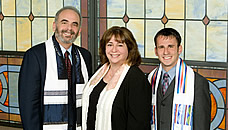
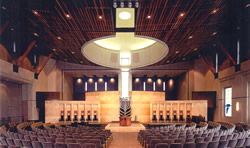
CONGREGATIONAL CURRENTS—Ernest Schoen is about to turn 100, and
Congregation Beth Israel is planning a celebration for its oldest
congregant. He'll be called to the bimah on August 3rd. A profile in
Tidings, the congregational newsletter, said he fled Nazi-occupied
Vienna, eventually had to flee Prague for the same reason; emigrated to
Malaysia, and eventually got to San Francisco where, as a musician, he played
for the San Francisco Opera before enlisting in the U.S. Army. Assigned to
the U.S. Army Band, he performed for Eleanor Roosevelt, singing one song in
German, then apologizing for it afterwards. She assured him: "We're not
fighting the German language, just the Nazis." His post war career was as a club
and movie musician in Los Angeles and New York. He retired to San Diego...
Stuart Simmons has become the executive director emeritus of Congregation
Beth Israel, leaving very big shoes to fill. Lesley Mills became acting
executive director on July 1, expanding on duties she already had undertaken
since July 2006 as development director....The new Beth Israel board president,
Amy Corton, defines her top priorities this way: "First and foremost, w
must build and retain our membership by creating a warm, welcoming an caring
congregation. We must foster community and connectedness to Judiasm and to
each other. We must ensure financial stability. Our financial future
depends on having more members. Fulfilled members are more likely to contribute
to the synagogue..." Madame President and the congregation's new spiritual
leader, Rabbi Michael Berk, appear to see eye to eye on this: He
wrote in his inaugural column: "...when you come to CBI, you will be warmly
welcomed. When you come to learn, our learning will be engaging and relevant.
When you come to celebrate, our celebrations will be joyous and moving.
when we worship together, our prayers will be lively and inspirational..."
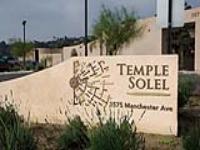

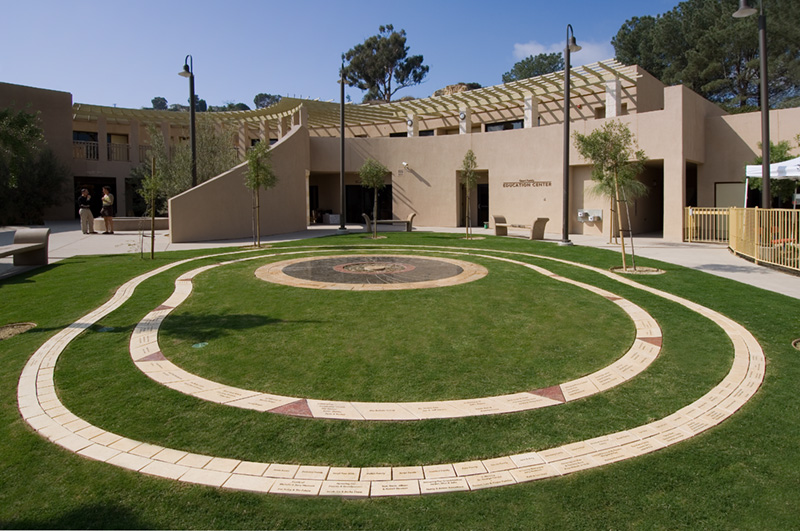

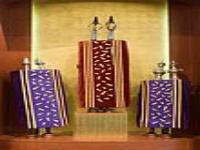
Temple Solel has a committee designed to reach out to fellow members in times of need. Called Hineynu, it has various task forces "such as transportation, emergency meals, well wishes, bereavement services and now, our new area, aging," according to an article in Pathfinder, the congregational newsletter. "Each month a different person takes a turn as Care Coordinator. They are the ones who are first contacted by the office as soon as a need is known. They then request services from the appropriate task force." Among the members credited with beginning the organization were Sheryl Baron, Carolyn Berlin and Linda Hutkin-Slade. Others who have been or are active include Pam Beimel, Lorna Lavine, Debbie Rolls, Ellen Gabor, Connie Robin, Ellen Cypers, Ina Rubenstein, Jayne Marx, and Eileen Ferber. The Reform congregation also has an active Social Action Committee involved in multiple activities. Some examples: It staged a Mitzvah Day April 22 which drew 100 congregants to do good deeds in the community. It collected $400 for the Coalition on the Environment and Jewish Life in honor of Earth Day. It wrote letters to various authorities urging relief for the refugees in Darfur, action to mitigate global warming, programs to care for uninsured children. Members cleared non-native plants from the Batiquitos Lagoon. Nearly 150 care packages were sent to troops in Irawq. Twelve members worked with Habitat for Humanity t build homes in hte Escondido area. Musical performances featuring Cantor Cathy Robbins, youth choir director Judy Grant and the youth choir entertained the residents of Seacrest Village at both the Encinitas and Rancho Bernardo facilities.
DEAD SEA SCROLLS—The San Diego Union-Tribune
reports that the Monday night lecture series conducted by the San Diego
Natural History Museum on different aspects of the Dead Sea Scrolls is
selling out fast. Some of the lectures, in fact, already are subscribed to the
limit.
LIBBY REACTION—We previously ran
statements
from various Jewish U.S. Senators and members of the House of Representatives in
reaction to President George W. Bush's commutation of the prison sentence of
I. Lewis "Scooter" Libby, former Chief of Staff to Vice President Dick
Cheney. Here's one we missed, issued July 3, by U.S. Sen. Norm Coleman
(Republican, Minnesota): "Scooter Libby was found to have lied and misled
investigators. The President's action does not-nor should it-excuse those
actions. As a former prosecutor, I believe the punishment should fit the crime.
Personally, I believe that the punishment for this albeit serious crime was
overly punitive and that commuting Libby's sentence was the fair thing to do.
These are highly partisan times, and the President's actions will be seen in
that context and we need to move beyond that. Given the President's decision on
commuting Mr. Libby's prison sentence, but not his fines or his conviction, I
urge there be no further consideration or discussion of a presidential pardon."
Judaism |
Which was worse:
idol worship or public fornication?
(Editor's note: Congregations throughout the world read the parsha Pinhas today.
Here is a discussion of that Torah portion delivered today by Dr. Irvin Jacobs
at Congregation Beth El, a Conservative synagogue in La Jolla.)
By Irvin Jacobs,
M.D.
LA JOLLA,
California—Let
me forewarn you that there is adult language in our tradition and in the words
in this D’var Torah.
To set up my thesis, let’s review. In the parsha Balak, read in synagogues the
last week of June, we see a plague killing the people, apparently in response to
their idolatrous and sexual behaviors in the matter of Pe’or with the Midianites.
As the plague raged, Zimri, a prince of the tribe Simeon, is seen to be
publicly copulating with Kozbi, a Midianite aristocrat woman. Moses is
apparently frozen to take action. Pinhas, a grandson of the High Priest Aaron,
abruptly picks up the mantle of leadership, and drives his spear through the
couple, in shish ka-bob fashion, killing them. The plague immediately ends.
In the opening lines of Pinchas, which follows this first week of July, G-d
favorably acknowledges Pinhas’ zealous deed, grants him a covenant of peace, and
assures him and his progeny of assignment to the priesthood forever.
Biblically, such a reward is significant. Only five eternal covenants are
recorded in the Hebrew Bible, respectively to Noah, Abraham, Moses, Pinhas, and
King David. Pinhas is in good company.
To complicate the Pinhas story, our tradition, with classic and delicious rabbinic reasoning, identifies Pinhas as one and the same as the prophet Elijah. Though there are more than one recorded rationale for this, Rabbi Ismar Schorsch, the recently retired chancellor of the Jewish Theological Seminary in New York, prefers the following:
He first finds in rabbinic texts the assertion that Elijah also was of the priestly family. Furthermore, from a line in the book of Chronicles I, Ch. 9, he finds that Pinhas was still alive in the days of King David. This is despite the fact that his appearance in parsha Pinhas is variably up to 500 years earlier, depending on whose calculation you prefer.
This unnatural longevity, coupled with the common priestly ancestry and religious passion of both Pinhas and Elijah, led the early rabbis, and the early Christian Church Fathers as well, to believe Pinhas was indeed none other than Elijah. The Bible in II Kings Ch. 2 reported, that Elijah went up to heaven in a whirlwind, i.e. he escaped the fate of human mortality. The zealous Pinhas, they concluded, was an earlier incarnation of the one and only eternal prophet Elijah.
Let me remind you of Elijah’s performance during his earthly days. In a period of religious persecution during the reign of the corrupt King Ahab with his pagan Queen Jezebel, Elijah confronted Jezebel and ended her threat to Jewish continuity, which included abandonment of circumcision.
(Jump to continuation)
 The Jewish Sports Fan
The Jewish Sports Fan
 |
Unless otherwise indicated, source for these stories is today's edition of The
San Diego Union-Tribune, to which we gratefully provide the links below. We do
not apply halacha to determine if a player is Jewish; rather, if he or she has a
Jewish parent or has converted to the faith, we count him or her as a member of
our community.
That's the kind of goniff who makes us all proud
BASEBALL—Such a day
Brad Ausmus
had for himself Friday as his Houston Astros defeated the New York Mets 4-0.
The catcher singled and walked and scored both times he got on base, helping the
cause by stealing second. That's the kind of goniff we can be proud
of. His batting average, by the way, is now .261. On the other side of
that contest, Mets outfielder Shawn Green had a frustrating day, going
0-3 as a batter, including one strike out. His average is .275.... Nu, so
what else happened with our Yiddishe ball players? Mike
Lieberthal of the Los Angeles Dodgers was a pinch hitter for Olmedo Saenz in
the seventh inning, and drew a walk, maintaining his BA at .209. However,
the Dodgers lost a heartbreaker to the Florida Marlins, 6-5 in 10 innings...Over
in the American League, Kevin Youkilis continued to nurse a sore left
quadricep, so didn't play in the game in which the Detroit Tigers demolished his
Boston Red Sox 9-2. We told you yesterday how by sitting the game on
Thursday he jumped from seventh to fifth place on the list of the American
League's top hitters. Sitting out Friday, he dropped to sixth place. His
batting average is .329.
TENNIS—We had been holding our breath as Harel Levy of Israel and men's
doubles partner Rajeev Ram of the United States advanced to the quarterfinals at
Wimbledon. But yesterday, we had to exhale—with disappointment—as they
were defeated by the French duo of Arnaud Clement and Michael Llodra 6-3, 6-2,
6-2.
(Return to top)

News from the Israel Baseball League |
Kurtzer tells playoff sequence for determining championship
TEL AVIV (Press Release)— The Israel Baseball League has announced the playoff format to determine the League's champion, in this, its inaugural season. The announcement was made Sunday (Israel time) by IBL Commissioner Daniel C. Kurtzer.
Following the conclusion of the regular season on August 15, there will be a playoff and championship round, featuring all six teams in the league. On Thursday, August 16, there will be two playoff games – the team that finishes in third place against the team that finishes sixth, and the team that finishes fourth against the fifth place finisher. The teams finishing the regular season in first and second place will get a bye.
On Friday, August 17, the first place finisher from the regular season will play the winner of the game between the fourth and fifth place teams; and the second place finisher from the regular season will play the winner of the game between the third and sixth place teams. In the event of ties in the standings, positions will be determined by a team’s record against the team it is tied with.
The championship game between the winners of the Friday playoff game will take place on Sunday, August 19 at Yarkon Field, in a game to be televised by Sport5.
For the playoff and championship games, the games will be nine-innings each, and there will be extra innings in case of a tie. The “home run derby” will not be used in the playoff and championship games.
The preceding story was provided by the Israel
Baseball League
(Return to top)
|
Arts & Entertainment |
|
|
Amos Oz is 2007 Prince of Asturias Awardee
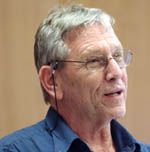



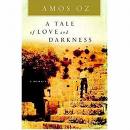

Author Amos Oz and book jackets for In the Land of Israel; A Perfect Place; The Silence of
Heaven; A Tale of Love and Darkness; and Under the Blazing Light.
BEER SHEVA, Israel (Press Release)—Prof. Amos Oz of Ben Gurion University of the Negev has been awarded the prestigious Prince of Asturias Award for Literature 2007 from the Prince of Asturias Foundation in Spain. The prize was awarded by a jury headed by Spanish Royal Language Academy director Victor Garcia de la Concha.
Oz, a member of the Department of Hebrew Literature at BGU is Israel’s preeminent author. According to the minutes of the Jury, Oz has "fashioned the Hebrew language into a brilliant instrument for literary art and for the truthful disclosure of the most dire and universal realities of our time, focusing especially on advocating peace amongst peoples and condemning all forms of fanaticism."
Oz has written 18 books in Hebrew, as well as several hundred articles and essays. His works have been translated into more than 30 languages. In a statement made upon notification of the winning the Prize, Oz said, “"If I have to say in one word what my entire literary work is all about, I would say ‘families.’ If I had two words, I would say ‘unhappy families’. If I had more than two words, you would have to read my works.”
Former winners of the Asturias literature prize include Mario Vargas Llosa, Gunter Grass, Doris Lessing and Arthur Miller. Last year's winner was US writer Paul Auster. Spain's Crown Prince Felipe is the patron of the Asturias Foundation, which distributes eight awards annually. The awards are made in the fields of communication and humanities, scientific and technical research, social science, arts, letters, international cooperation, international understanding and sports.
The preceding story was provided by Ben Gurion University of the Negev
|
The husband, having just finished reading the book, Man of the House, strode into the kitchen and up to his wife. Pointing a finger in her face, he said: "From now on, I want you to know that I am the man of this house, and my word is law! I want you to prepare me a gourmet meal tonight, and when I'm finished I expect a sumptuous dessert. Then, after dinner, you are going to draw me my bath so I can relax. And when I'm finished with my bath, guess who's going to dress me and comb my hair?" His wife replied, "The Chevra Kadisha?" —Thanks to Cantor Sheldon Merel for forwarding this one |
|
Story Continuations |
(Continued from above)
Papal Letter on 1962 Missal "Summorum Pontificum"
* * * Apostolic Letter
In the form "motu proprio" Benedict XVI "Summorum Pontificum" Up to our own times, it has been the constant concern of Supreme Pontiffs to ensure that the Church of Christ offers a worthy ritual to the Divine Majesty, "to the praise and glory of His name," and "to the benefit of all His Holy Church." Since time immemorial it has been necessary -- as it is also for the future -- to maintain the principle according to which "each particular Church must concur with the universal Church, not only as regards the doctrine of the faith and the sacramental signs, but also as regards the usages universally accepted by uninterrupted apostolic Tradition, which must be observed not only to avoid errors but also to transmit the integrity of the faith, because the Church's law of prayer corresponds to her law of faith."[1]
Among the Pontiffs who showed that requisite concern, particularly outstanding is the name of St. Gregory the Great, who made every effort to ensure that the new peoples of Europe received both the Catholic faith and the treasures of worship and culture that had been accumulated by the Romans in preceding centuries. He commanded that the form of the sacred liturgy as celebrated in Rome (concerning both the Sacrifice of Mass and the Divine Office) be conserved. He took great concern to ensure the dissemination of monks and nuns who, following the Rule of St. Benedict, together with the announcement of the Gospel, illustrated with their lives the wise provision of their rule that "nothing should be placed before the work of God." In this way the sacred liturgy, celebrated according to the Roman use, enriched not only the faith and piety but also the culture of many peoples. It is known, in fact, that the Latin liturgy of the Church in its various forms, in each century of the Christian era, has been a spur to the spiritual life of many saints, has reinforced many peoples in the virtue of religion and fecundated their piety.
Many other Roman pontiffs, in the course of the centuries, showed particular solicitude in ensuring that the sacred liturgy accomplished this task more effectively. Outstanding among them is St. Pius V who, sustained by great pastoral zeal and following the exhortations of the Council of Trent, renewed the entire liturgy of the Church, oversaw the publication of liturgical books amended and "renewed in accordance with the norms of the fathers," and provided them for the use of the Latin Church. One of the liturgical books of the Roman rite is the Roman Missal, which developed in the city of Rome and, with the passing of the centuries, little by little took forms very similar to that it has had in recent times. "It was towards this same goal that succeeding Roman Pontiffs directed their energies during the subsequent centuries in order to ensure that the rites and liturgical books were brought up to date and when necessary clarified. From the beginning of this century they undertook a more general reform."[2] Thus our predecessors Clement VIII, Urban VIII, St. Pius X,[3] Benedict XV, Pius XII and Blessed John XXIII all played a part.
In more recent times, the Second Vatican Council expressed a desire that the respectful reverence due to divine worship should be renewed and adapted to the needs of our time. Moved by this desire our predecessor, the Supreme Pontiff Paul VI, approved, in 1970, reformed and partly renewed liturgical books for the Latin Church. These, translated into the various languages of the world, were willingly accepted by bishops, priests and faithful. John Paul II amended the third typical edition of the Roman Missal. Thus Roman Pontiffs have operated to ensure that "this kind of liturgical edifice ... should again appear resplendent for its dignity and harmony."[4]
But in some regions, no small numbers of faithful adhered and continue to adhere with great love and affection to the earlier liturgical forms. These had so deeply marked their culture and their spirit that in 1984 the Supreme Pontiff John Paul II, moved by a concern for the pastoral care of these faithful, with the special indult "Quattuor Abhinc Anno," issued by the Congregation for Divine Worship, granted permission to use the Roman Missal published by Blessed John XXIII in the year 1962. Later, in the year 1988, John Paul II with the apostolic letter given as "motu proprio, "Ecclesia Dei," exhorted bishops to make generous use of this power in favor of all the faithful who so desired.
Following the insistent prayers of these faithful, long deliberated upon by our predecessor John Paul II, and after having listened to the views of the cardinal fathers of the consistory of 22 March 2006, having reflected deeply upon all aspects of the question, invoked the Holy Spirit and trusting in the help of God, with these apostolic letters we establish the following:
Art 1. The Roman Missal promulgated by Paul VI is the ordinary expression of the "Lex orandi" (Law of prayer) of the Catholic Church of the Latin rite. Nonetheless, the Roman Missal promulgated by St. Pius V and reissued by Blessed John XXIII is to be considered as an extraordinary expression of that same "Lex orandi," and must be given due honor for its venerable and ancient usage. These two expressions of the Church's "Lex orandi" will in no any way lead to a division in the Church's "Lex credendi" (Law of belief). They are, in fact two usages of the one Roman rite. It is, therefore, permissible to celebrate the Sacrifice of the Mass following the typical edition of the Roman Missal promulgated by Blessed John XXIII in 1962 and never abrogated, as an extraordinary form of the liturgy of the Church. The conditions for the use of this Missal as laid down by earlier documents "Quattuor Abhinc Annis" and "Ecclesia Dei," are substituted as follows:
Art. 2. In Masses celebrated without the people, each Catholic priest of the Latin rite, whether secular or regular, may use the Roman Missal published by Blessed Pope John XXIII in 1962, or the Roman Missal promulgated by Pope Paul VI in 1970, and may do so on any day with the exception of the Easter Triduum. For such celebrations, with either one Missal or the other, the priest has no need for permission from the Apostolic See or from his ordinary.
Art. 3. Communities of institutes of consecrated life and of societies of apostolic life, of either pontifical or diocesan right, wishing to celebrate Mass in accordance with the edition of the Roman Missal promulgated in 1962, for conventual or "community" celebration in their oratories, may do so. If an individual community or an entire institute or society wishes to undertake such celebrations often, habitually or permanently, the decision must be taken by the superiors major, in accordance with the law and following their own specific decrees and statues.
Art. 4. Celebrations of Mass as mentioned above in art. 2 may -- observing all the norms of law -- also be attended by faithful who, of their own free will, ask to be admitted.
Art. 5. §1 In parishes, where there is a stable group of faithful who adhere to the earlier liturgical tradition, the pastor should willingly accept their requests to celebrate the Mass according to the rite of the Roman Missal published in 1962, and ensure that the welfare of these faithful harmonizes with the ordinary pastoral care of the parish, under the guidance of the bishop in accordance with Canon 392, avoiding discord and favoring the unity of the whole Church. §2 Celebration in accordance with the Missal of Blessed John XXIII may take place on working days; while on Sundays and feast days one such celebration may also be held. §3 For faithful and priests who request it, the pastor should also allow celebrations in this extraordinary form for special circumstances such as marriages, funerals or occasional celebrations, i.e., pilgrimages. §4 Priests who use the Missal of Blessed John XXIII must be qualified to do so and not juridically impeded. §5 In churches that are not parish or conventual churches, it is the duty of the rector of the church to grant the above permission.
Art. 6. In Masses celebrated in the presence of the people in accordance with the Missal of Blessed John XXIII, the readings may be given in the vernacular, using editions recognized by the Apostolic See.
Art. 7. If a group of lay faithful, as mentioned in art. 5 §1, has not obtained satisfaction to their requests from the pastor, they should inform the diocesan bishop. The bishop is strongly requested to satisfy their wishes. If he cannot arrange for such celebration to take place, the matter should be referred to the Pontifical Commission Ecclesia Dei.
Art. 8. A bishop who, desirous of satisfying such requests, but who for various reasons is unable to do so, may refer the problem to the Commission Ecclesia Dei to obtain counsel and assistance.
Art. 9. §1 The pastor, having attentively examined all aspects, may also grant permission to use the earlier ritual for the administration of the sacraments of baptism, marriage, penance, and the anointing of the sick, if the good of souls would seem to require it. § 2 Ordinaries are given the right to celebrate the sacrament of confirmation using the earlier Roman Pontifical, if the good of souls would seem to require it. § 2 Clerics ordained "in sacris constitutis" may use the Roman Breviary promulgated by Blessed John XXIII in 1962.
Art. 10. The ordinary of a particular place, if he feels it appropriate, may erect a personal parish in accordance with Canon 518 for celebrations following the ancient form of the Roman rite, or appoint a chaplain, while observing all the norms of law.
Art. 11. The Pontifical Commission Ecclesia Dei, erected by John Paul II in 1988[5], continues to exercise its function. Said commission will have the form, duties and norms that the Roman Pontiff wishes to assign it.
Art. 12. This commission, apart from the powers it enjoys, will exercise the authority of the Holy See, supervising the observance and application of these dispositions. We order that everything We have established with these apostolic letters issued as "motu proprio" be considered as "established and decreed," and to be observed from Sept. 14 of this year, feast of the Exaltation of the Cross, whatever there may be to the contrary. From Rome, at St. Peter's, July 7, 2007, third year of Our Pontificate.
[1] General Instruction of the Roman Missal, 3rd ed., 2002, No. 397.
[2] John Paul II, apostolic letter "Vicesimus Quintus Annus," Dec. 4, 1988, 3: AAS 81 (1989), 899. [3] Ibid.
[4] St. Pius X, apostolic letter issued "motu propio data," "Abhinc Duos Annos," Oct. 23, 1913: AAS 5 (1913), 449-450; cf John Paul II, apostolic letter "Vicesimus Quintus Annus," No. 3: AAS 81 (1989), 899.
[5] Cf John Paul II, apostolic letter issued "motu proprio data," "Ecclesia Dei," July 2, 1988, 6: AAS 80 (1988, 1498.
(Return to top)
Jimmy Carter's propaganda...
(Continued from above)
Carter emphasizes that apartheid is in Gaza and the West Bank: closed and separated, and with areas of the West Bank cut off from one another with Israel’s barriers of fences and walls along with numerous checkpoints on the roads. He sees the barriers as violations of international law, and as assurance that Palestinian animosity will continue to fuel violence. Here and there he agrees that Israel has a right of self defense, but only if it built the barriers on the international border or within its own territory. Sometimes even this would violate his norms, insofar as it would prevent Palestinians from working, receiving social services, or visiting religious sites in Israel.
What most seems to arouse Carter is the barriers’ protection of the settlements built for Jews on Palestinian land, and the roads which only Israelis are permitted to use.
There are several problems in the distinctions Carter would like us to accept. First, the prominence of apartheid in the title overcomes his efforts to refine his accusation. Secondly, the concept of apartheid, and the principal feature of its ugliness, is racism. However, Israel’s barriers are not racist but territorial. They are not directed against Arabs. but against Palestinians who are not residents of Israel. Arabs circulate freely within Israel, calling themselves “Israeli Arabs” or “Palestinians living in Israel.” Palestinians of Gaza and the West Bank have been violent. More than 80 percent of them polled by Palestinian organizations have expressed support for the violence against Israeli civilians. Just as any country can set itself off from danger and enter other countries in actions that are basically defensive, Israel can claim a right to construct barriers in order to protect its citizens from a continuation of the violence that has killed more than 1,000 of them—the great majority civilians—from 2000 onward. Against Carter’s claim of Israel’s intransigence is the record that Israel made what was arguably a generous proposal. Yassir Arafat rejected it, and moved to the incitement and management of violence.
In short, Carter is throwing at Israel one of the dirtiest words he can find, yet it does not fit the situation, even after his bending and twisting to justify its use.
Carter’s rhetoric about the barriers being built on Palestinian land also deserves comment. It falls afoul of the problematic border between Israel and what is called the West Bank. A reasonable view is that the land is disputed; not clearly Israeli or Palestinian. If the barriers come to define the border, the responsibility will be at least partly a product of Palestinian rejectionism and violence. The barriers are part of a war that continues.
The Berlin Wall came down. Israel is inserting numerous border crossings into the barriers. Israel’s Supreme Court has halted the construction of sections, or demanded their dismantling, when convinced that damage to Palestinian interests outweigh the security arguments. How often the gates will be open, how thorough the inspections of Palestinians wanting to cross, and how long the barriers remain, will depend on Israel’s conception of a threat from Palestinian violence.
Nakba (catastrophe) continues the theme of Israeli injustices, with barely a hint of what the Palestinians contributed to their problems. Rape is prominent in the book, serving as an parallel to Carter's ugly word of apartheid. Contributors cite Israeli sources for a dozen or so cases rape during and after the 1948 war, and assert that there were more. They also write about rape as a metaphor, which includes Israeli property development, typically described as ugly, said to be the rape of Palestinian land.
In November, 2001, I heard an American of Palestinian origin talking on the BBC about a radio play dealing with the raping of Palestinian women in Israeli jails. I learned that an Israeli-Palestinian civil rights organization had investigated a number of charges, and found nothing to support them. BBC broadcast the story without question, as if rapes of Palestinian women were a regular occurrence in Israeli jails
Several contributors to the Nakba anthology discuss what they call the massacre of Jenin in 2002. The Palestinian narrative is that the IDF killed 3,000 civilians. Human Rights Watch, usually unfriendly to Israel, put the death toll of Palestinians at 31 fighters and 22 civilians. Twenty-three Israeli soldiers died in the same operation.
Jenin, like the larger story of Palestinian Nakba, did not occur in a vacuum. The Palestinian flights or expulsions in 1948 were part of a war in which Palestinian fighters were active, and in which some 6,000 Israelis lost their lives. The attack on Jenin came as part of Israel's response to an especially ugly suicide bombing at a Passover Seder that killed 30 celebrants and injured 140.
A key element in the Palestinian narrative is the notion of refugee camps. The term appears throughout Nakba. The implication is something temporary, like tents whose residents are waiting to return home. The reality is poor urban neighborhoods, with substantial dwellings that have provided shelter for several generations. Dependence comes with the food and social services provided by United Nations and other organizations, which themselves live off the notion of refugees who somehow cannot settle themselves into anything like a permanent existence of self-sufficiency.
Misery occurs to Israelis and to Palestinians. It will continue as long as the Palestinian narrative emphasizes the land that was lost, and which must be returned. Change happens. People move. One can no more identify the "original inhabitants" of Palestine than those of Germany, Great Britain, or the United States. People who live in the past limit their opportunities for the present and the future. It does not help when they obsess on tendentious claims of injustice, like Jimmy Carter's assertion of apartheid, or the Palestinians' rape of history.
Myth of Silence...
(Continued from above)
At the Lincoln Memorial, the rabbis—who had declared a fast for the day—prayed for the success and well being of the armed forces, for a swift victory and for the Jews still alive in Europe. Then they walked to the White House and prayed outside the gates. Though they had expected to meet with the President, they were told that he was unavailable, attending to important matters of state. Later they learned President Roosevelt was at Bolling Field witnessing a minor ceremony conducted for the U.S. Army Air Corps.
The purpose of Roosevelt’s visit to the Air Force was to avoid meeting with the rabbis. In the absence of the President, the Vice-President accepted a Rescue Memorandum from Rabbi Silver on behalf of the Agudas Harabonim. The petition stated: In view of this tragic emergency, it is a holy obligation to take drastic steps to save the Jewish people. America was asked to:
1. To adopt immediate and practical measures of rescue and to use all possible means to end the murders committed by Nazi criminals.
2. To warn Germany and all that every atrocity and crime perpetrated against their Jewish residents, whether by governments or private individuals, will be held against them and that, likewise, every act of kindness toward their unfortunates will not pass unnoticed.
3. To send ships with food and medical supplies to the Jews starving in ghettos, under the supervision of a neutral commission or through the International Red Cross.
4. To influence and persuade neutral countries to allow the Jewish refugees who flee from the Nazi sword to seek security within their borders and to guarantee to these countries the means for the temporary maintenance of these refugees.
5. To open the gates of the United Nations to provide havens therein, and to facilitate the entry into our land, the United States of America, of those who can escape the Nazi terror.
6. To open the doors of Palestine immediately to these refugees.
7. To create a special intergovernmental agency to save the remnant of Israel in Europe with powers and means to act at once on a large scale.27
Without such prodding, the American government might never have acted. John Pehle, who served as the first director of the War Refugee Board said, “Only when the matter [of rescue] was brought to the President forcefully did Roosevelt react.”
Dr. Grobman’s latest book Nations United: How the UN is Undermining Israel and the West is published by Balfour Books.
(Return
to top)
Pinhas ...
(Continued from above)
But the rabbis were not unequivocally pleased with Pinhas’ deed. For one thing, they divided his story, which is chapter 25 of Numbers, at the halfway point. The reading Balak, in the last week of June, ended with the zealous shish ka-bob rage incident. This subsequent reading, Pinhas, begins with the blessed reward.
Furthermore in the Torah scrolls, the scribes
make two subtle revisions in the written text to show displeasure with Pinhas:
(1) They use a small-font yod in the name Pinhas in Ch. 25:11 (pay, yod, nun,
chet, samach). As said, When we commit violence, even if justifiable, the yod in
us (standing for the name of G-d and y’hudi, (Jew) is diminished. (2) Secondly,
in the following verse 12, they inscribe the vav in the word shalom, i.e. G-d’s
reward to Pinhas, with a break in its stem. This is interpreted to suggest that
the sort of peace one achieves by destroying one’s opponent will inevitably be a
flawed, incomplete peace. In addition and perhaps more important, Pinhas’
reactive deed of slaughter was immediate and passionate, with no deliberation
and no judicial trial before elders or peers, as subsequent Jewish law would
require. The Talmud claims that, had Pinhas asked the rabbinical court if it was
permitted to kill Zimri and Cozbi, the court would have told him: The law may
permit it but we do not follow that law!
In contemporary reference, we decry the deeds of Islamic terrorists, who after
all are zealots for their cause, however misdirected in our eyes. By the same
token, we can find fault with Biblical Pinhas.
Though passion is commendable, it is not an only
consideration. How about leadership that seeks to foster good in each person,
and to direct that good to a desired communal goal? Shouldn’t we work with those
not yet committed to the goal?
Modern Orthodox Rabbi Shlomo Riskin makes interesting commentaries as to the
meanings of the sins of the Israelites in last week’s Torah reading. He is the
founder in 1964 and rabbi for 19 years of the Lincoln Square Synagogue, which I
believe became known as the largest Orthodox congregation in New York City.
Since 1983, he is the rabbi of an aliyah community in Efrat, Israel. In his
drosh on this subject, he asks, Was the sin that of worship of Pe’or, or was it
of public sexual seduction? Was it a fusion of both? He finds worrisome
overtones that exist in today’s post-Modern world.
In the Talmud, the seer Balaam, commissioned by King Balak of Moab, along with
his Midianite friends, to curse the Israelites in last week;s parsha, is
identified as ben Be’or, i.e. the son of the idol Pe’or. He intended enemy
nations to vanquish Israel via sexual seduction by young nubile gentile women
and not via idol worship. In contrast to the Israelites, a public sexual act to
them was a fertility ritual.
Rabbi Riskin points out that in the Mishnah, Pe’or worship actually consisted of
public defecation at the foot of the idol Pe’or, to please him. Though this is
not appetizing to us, it apparently was popular with the Moabites and the
Midianites.
Riskin warns of a like popularity today. The reasoning goes that since
defecation is normal and gives relief, do it as a “good: thing. The same goes
for sex. Whatever feels good, you should do. He states a parody of the famous
19th Century line from Ralph Waldo Emerson: Discipline is the hobgoblin of
little minds. In our post-modern mentality, self-expression takes precedence
over duty to family, country, and ideal. There are no absolutes as to propriety.
Ethics are situational. How often have we heard this?
Such notions are antithesis to the Jewish ideal of perfecting the world in the
Kingship of the Divine.
So, what was the greater crime—idol worship or public fornication? Though our
Bible text shows ambiguity as to which was the precipitant of the plague, Riskin
insists they are the same. After all, in this construct, sex has nothing to do
with love and sanctity, only physical urge, more in line with defecation than a
sacred union.
* *
Let’s return to Pinhas. He had zeal for G-d, but he lacked a framework for
directing that passion for good ends.For this, I am indebted to a drosh on
Pinhas by Helene Santo in 2005. She is the Director of Operations of the Academy
of Jewish Religion, a conservative rabbinical and cantorial school in Riverdale,
NY. Ms. Santo suggests that perhaps Pinhas’ reward of the priesthood was
intended to help him rein in his passion in a more appropriate way. It gave him
a job description within which he could better approach G-d with humility.
Today’s leaders, and those of the future, could use some of the same.


